Why would a student choose a college to attend, pay a deposit, then change their minds about attending that institution (or attending school altogether)?
It’s a frustrating reality for admissions staff across the country who watch their enrollment numbers take a hit due to melt.
If you think you and your staff have tried everything to freeze the melt, maybe try some of these:
1. Clear the confusion
Money drives most major life decisions. While you can’t fault a high school grad for having financial anxiety, you can make yourself available at every touchpoint to clarify confusing parts of the admissions process and ease their concerns.
How easy is it for students to access (or even find) financial aid and scholarship opportunities?
When you think about it from the standpoint of a student, it’s easy to see opportunities for guidance. By sharing resources and offering encouragement, you will be able to steer more students to the finish line.
Using personal, conversational texts is especially helpful for first-generation students who do not have a guardian to turn to for assistance.
For students who need help, but would rather not ask for it, a chatbot can work wonders. The right virtual assistant chatbot eliminates friction and answers questions to steer potential students in the right direction, with no staff intervention needed. A satisfied website visitor is less likely to get frustrated and give up.
Once a student has answered a few questions from a chatbot, they’ll be automatically steered in the direction of resources they’re looking for.
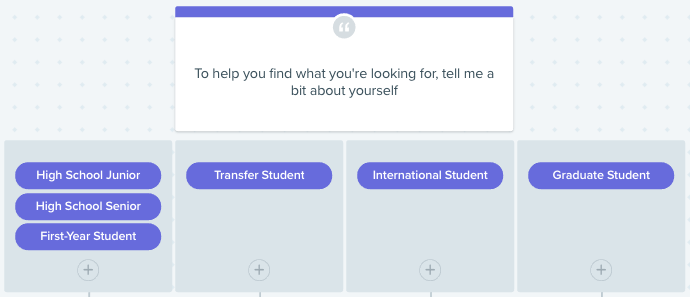
Think of the enrollment process like a crowded grocery store - get people in and out with what they need and they’ll be happy. Removing obstacles and guiding students through the financial aid and tuition portion of the registration process increases the chances that they’ll attend classes at your institution.
2. Be transparent with costs
What’s worse, the initial sticker shock from tuition or several sticker shocks revealed over the course of several months? We find that being upfront with costs is the best approach. Students and parents are on your website for that information; if they don’t find it they’ll look somewhere else.
Be as clear as possible with your incoming class on what to expect as far as tuition costs, fees, costs of supplies and books, and opportunities for tuition aid and scholarships.
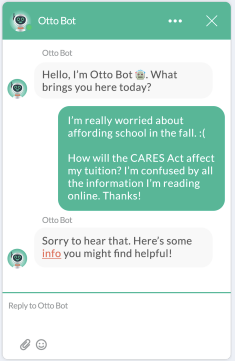
To serve the silent website searchers and seamlessly obtain their data, implement a chatbot playbook. Visitors will be greeted on your site with pre-loaded tuition information, links to receive additional info, and the potential to live chat with a helpful human. This will give students more confidence about their decision.
3. Get parents involved
Short of pricey Instagram influencers, parents have the most pull when it comes to students making decisions on colleges. Keep guardians in the loop so they have the information they need to help their kids make decisions. With a line to open communication, you can let parents know what is expected, what’s next, and what their children need to do to avoid pain points in the admissions process.
There’s no better ‘deadline’ alarm than a motivated guardian, so encourage parents to meet with their children at certain intervals through the enrollment process to make sure they’re on track. It’s a good strategy to have a specific page on your school’s website for parent questions. They’re likely to do more research than their children.
Be upfront about sharing information with parents so they don’t have to feel like they’re sneaking around during the process. You can collect their texting info to send updates and make your staff available for questions.
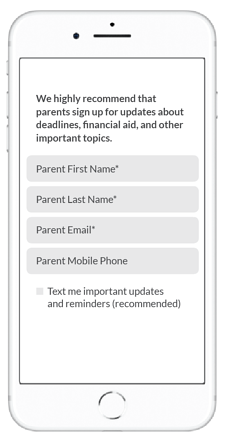
4. Steer students past the gaps
A prospective college student cares more about their future plans than your needs for completed housing forms and medical documents. If there are large gaps between due dates and responses from a student, that’s a warning sign the student is a melt risk.
A virtual assistant chatbot can help smooth over the gaps by remembering past website visitor information, such as their educational program. Using visitor data, a bot can give little nudges for necessary actions needed. For example, if a prospective student interacts with your chatbot once, the next time they visit your site, the bot can give them a FAFSA reminder. And your staff doesn’t need to do a thing.
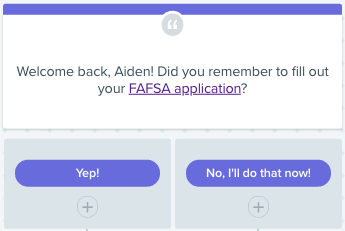
When you keep track of when students complete forms and move on to the next steps, you know when to reach out and offer guidance. Nudges work. The times you send reminders about forms and deadlines are opportunities to see if a student has any questions.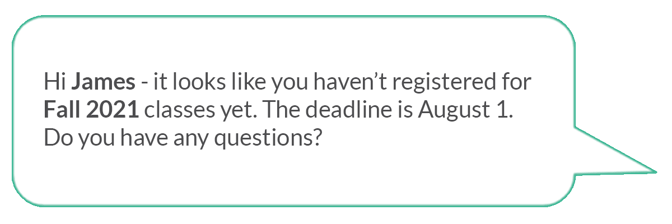
If you have an event planned such as orientation, require that students RSVP so you can keep a gauge on their intentions.
Support reduces melt
Excitement + stress is not a recipe for organization, and that’s exactly what prospective students are experiencing. There is no one, all-encompassing way to explain every step of the enrollment process. All you can do is meet them where they’re at, offer help, and build a relationship. The more they know, the less they melt.
Note: This post is sponsored by our friends at Mongoose. It was originally published on the Mongoose blog.
Looking for more great content?






Submit a Comment